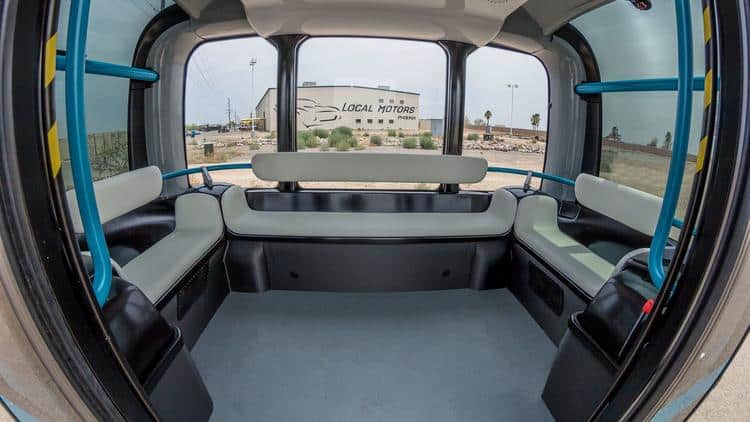From the LA Times
Walt Disney World in Florida appears poised to launch the highest-profile commercial deployment of driverless passenger vehicles to date, testing a fleet of driverless shuttles that could cart passengers through parking lots and around its theme parks.
According to sources with direct knowledge of Disney’s plans, the company is in late-stage negotiation with at least two manufacturers of autonomous shuttles – Local Motors, based in Phoenix, and Navya, based in Paris. It’s unclear whether contracts would go to both or just one of the companies.
The sources, who asked not be identified to avoid offending Disney, said the company plans a pilot program later this year to transport employees in the electric-drive robot vehicles. If that goes well, they said, the shuttles would begin transporting park visitors sometime next year.
Currently, there are no plans for driverless shuttles at Disneyland in Anaheim, according to the sources. The reason is unclear, but Florida puts few restrictions on driverless vehicle deployment, while California is overhauling regulations that have been criticized by industry as unnecessarily heavy handed.
Disney did not return emails and phone calls seeking comment. Navya and Local Motors declined to discuss Disney.
A barrage of media coverage on driverless cars over the last year or so has primed the public for their appearance on public roads. Although vehicle manufacturers say individuals won’t be able to buy driverless cars for several years, vehicles are being gradually introduced to the public in limited areas.
Waymo, the driverless arm of Alphabet-Google, has begun offering rides in driverless cars in Phoenix.

Last year, several driverless shuttle companies started testing the vehicles with public passengers in business parks and college campuses in Finland, Singapore, Washington, D.C., Las Vegas and other locations.
Autonomous shuttles are bound to be “the first exposure most people have to driverless technology,” said Ben Stinnet, chief operating officer at Auro Robotics, a start-up in Santa Clara, Calif. The company, which is not involved in the Disney deal, is testing small shuttles at Santa Clara University.
Other shuttle start-ups include EasyMile of Toulouse, France, and SB Drive of Tokyo.
Most of the vehicles are shaped like tall bricks on wheels. With plenty of headroom, the shuttles typically can carry up to 12 to 15 passengers. Equipped with cameras, radar and laser sensors, they’re limited in “geofenced” areas – zones where the environment is well-mapped and understood by the vehicles’ artificial intelligence software and hardware.
Though the shuttles are capable of driving 25 mph or more, their speed is usually limited in initial deployments to 5 to 10 mph.
“They should be boring,” said Alain Kornhauser, an autonomous vehicle expert at Princeton University. “Riding in an elevator is boring. It takes you where you want to go.”
Shuttles like those planned at Walt Disney World “are in a sense going to demonstrate to the public that (robot vehicles) really work.”
Walt Disney World is comprised of several theme parks covering vast territory near Orlando. Hundreds of buses, boats and parking lot trams transport park guests and employees. There are also three monorails.
Some Disney watchers see driverless shuttles recapturing the futuristic vision set when monorails were introduced at Disneyland in the early 1960s and Walt Disney World in the early 1970s.
Driverless vehicles “would make transportation at Disney World cool again,” columnist John Frost wrote on the Disney Blog in 2013.
No one’s sure how big the market for autonomous shuttles might be. Driverless technology and app-based on-demand transportation are expected to transform public transportation. But huge questions remain unanswered. Will cities go driverless with their big buses? Or will those be gradually replaced by smaller shuttles driving dynamic custom routes, based on demand?
Kornhauser said transit officials are just beginning to come to grips with such questions.
In the meantime, companies are out to grab a big piece of whatever market does emerge.
Local Motors is building its Olli driverless shuttle on 3-D printers at a factory in National Harbor, Md. It has shuttles running in Berlin and the Washington, D.C., area.
In January, the company demonstrated the Olli on the Las Vegas Strip during the Consumer Electronics Show, and it plans a more permanent deployment.
- Disney Hotel wins Marriott Hotel of the Year Award - July 26, 2024
- All-Female Classic Universal Monsters Headline HHN House - July 25, 2024
- Howl-O-Sprint – Run for Your Life: Friday, Sept. 13 - July 24, 2024





